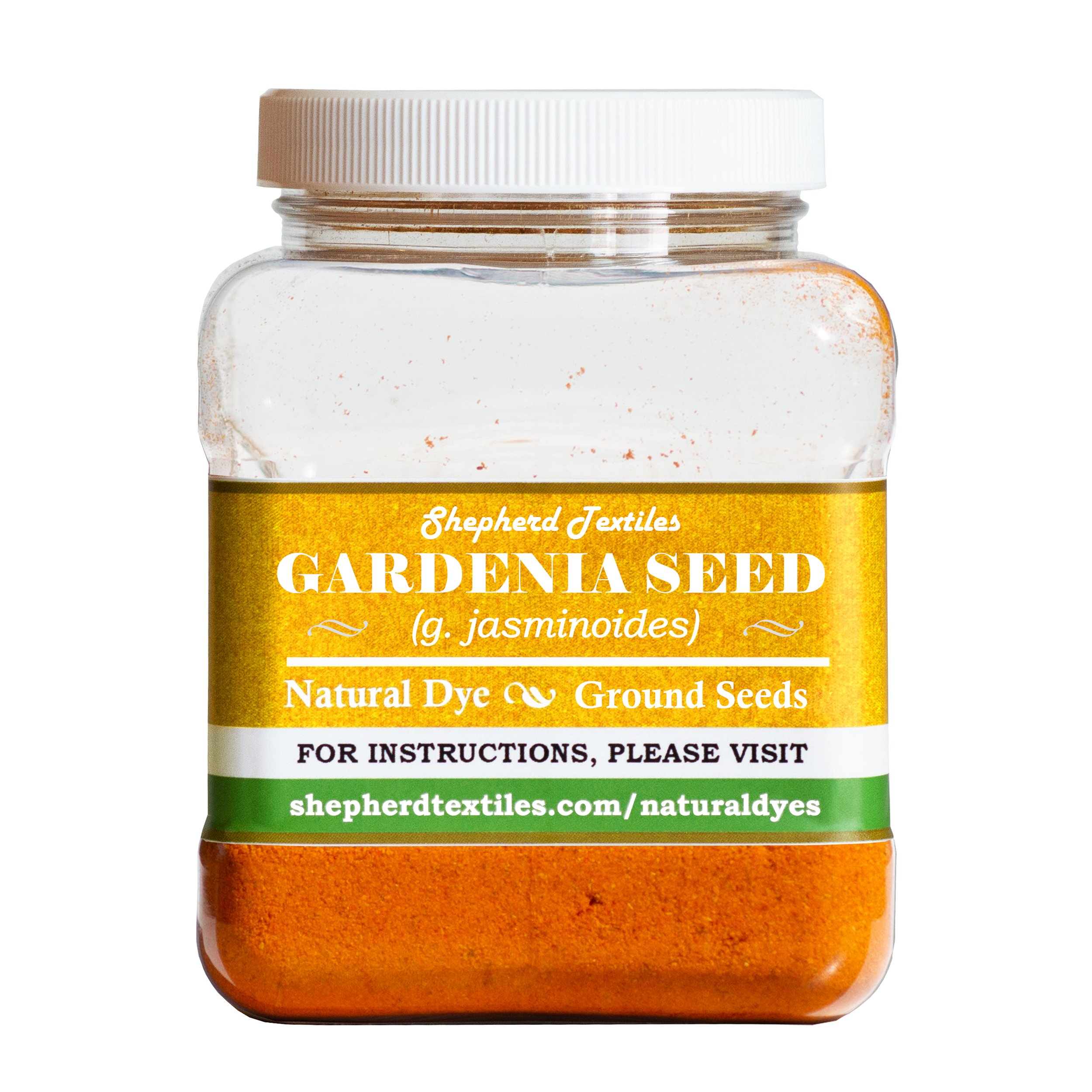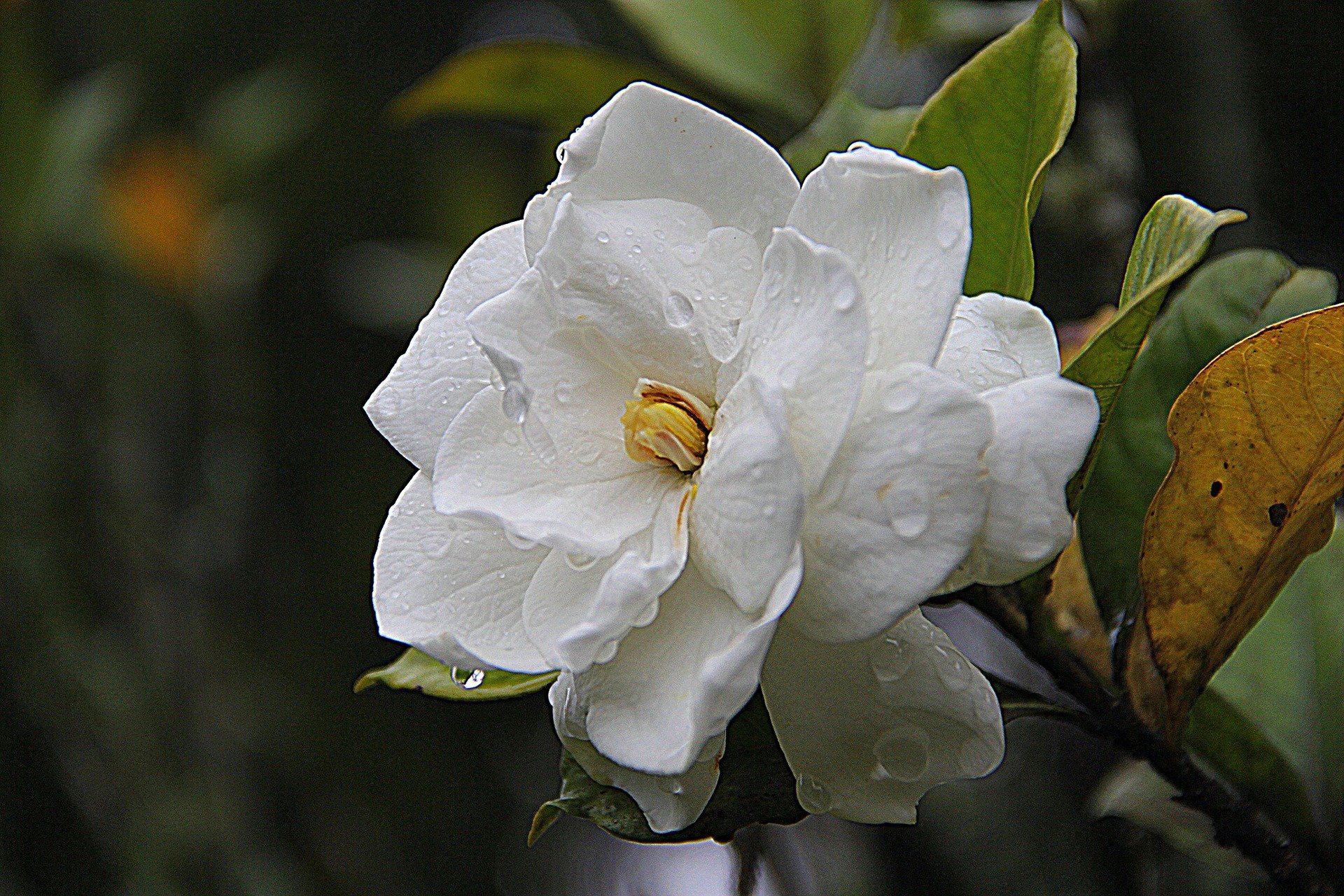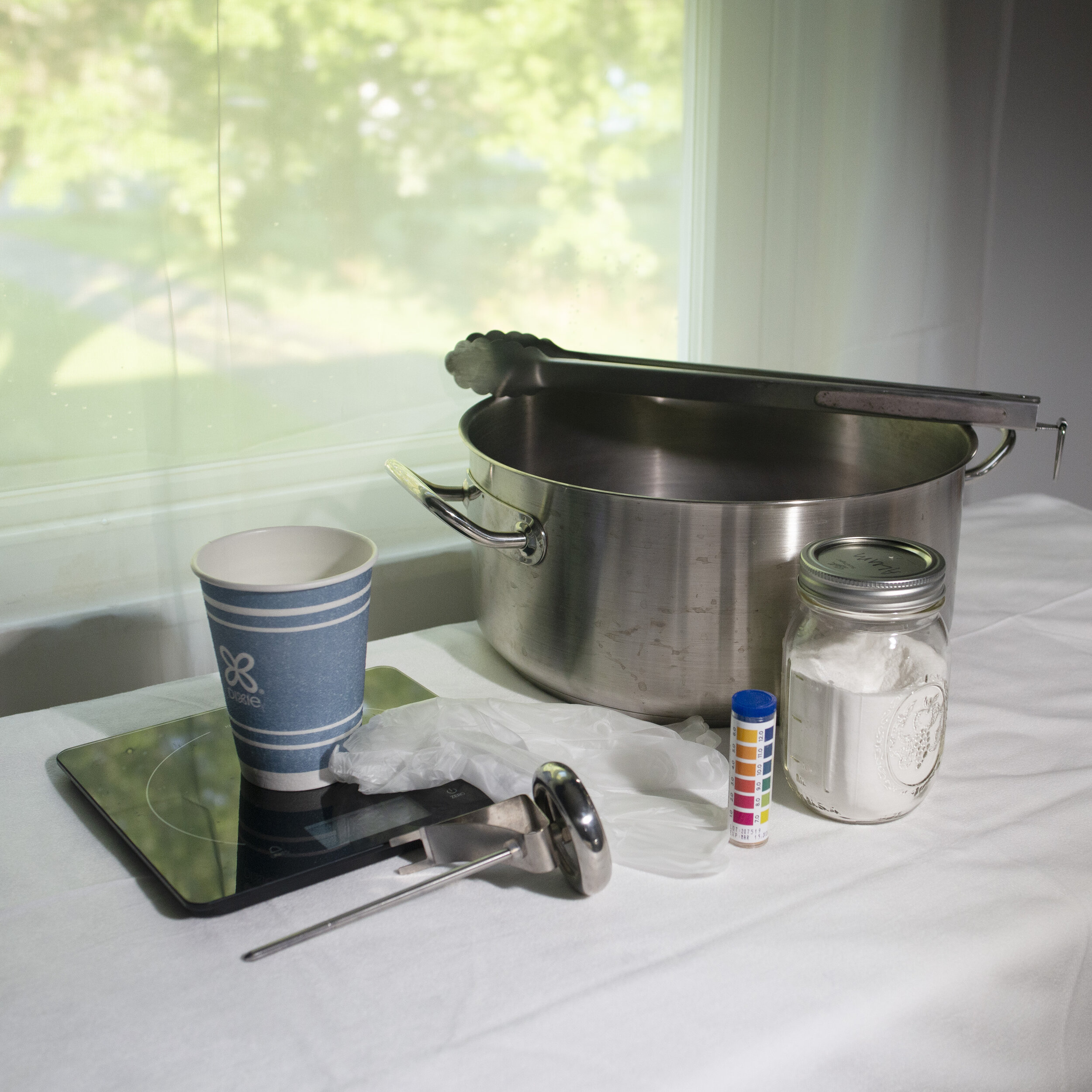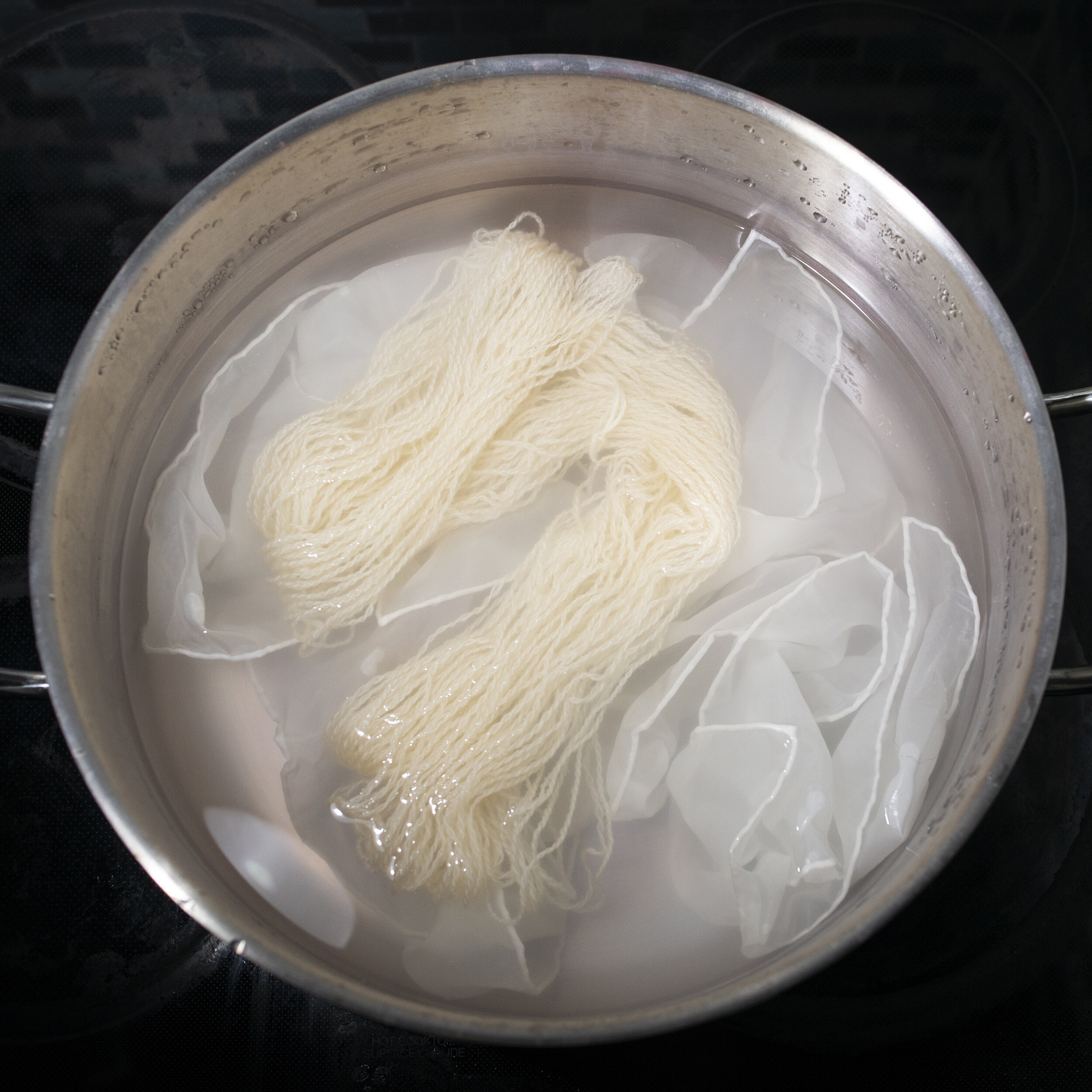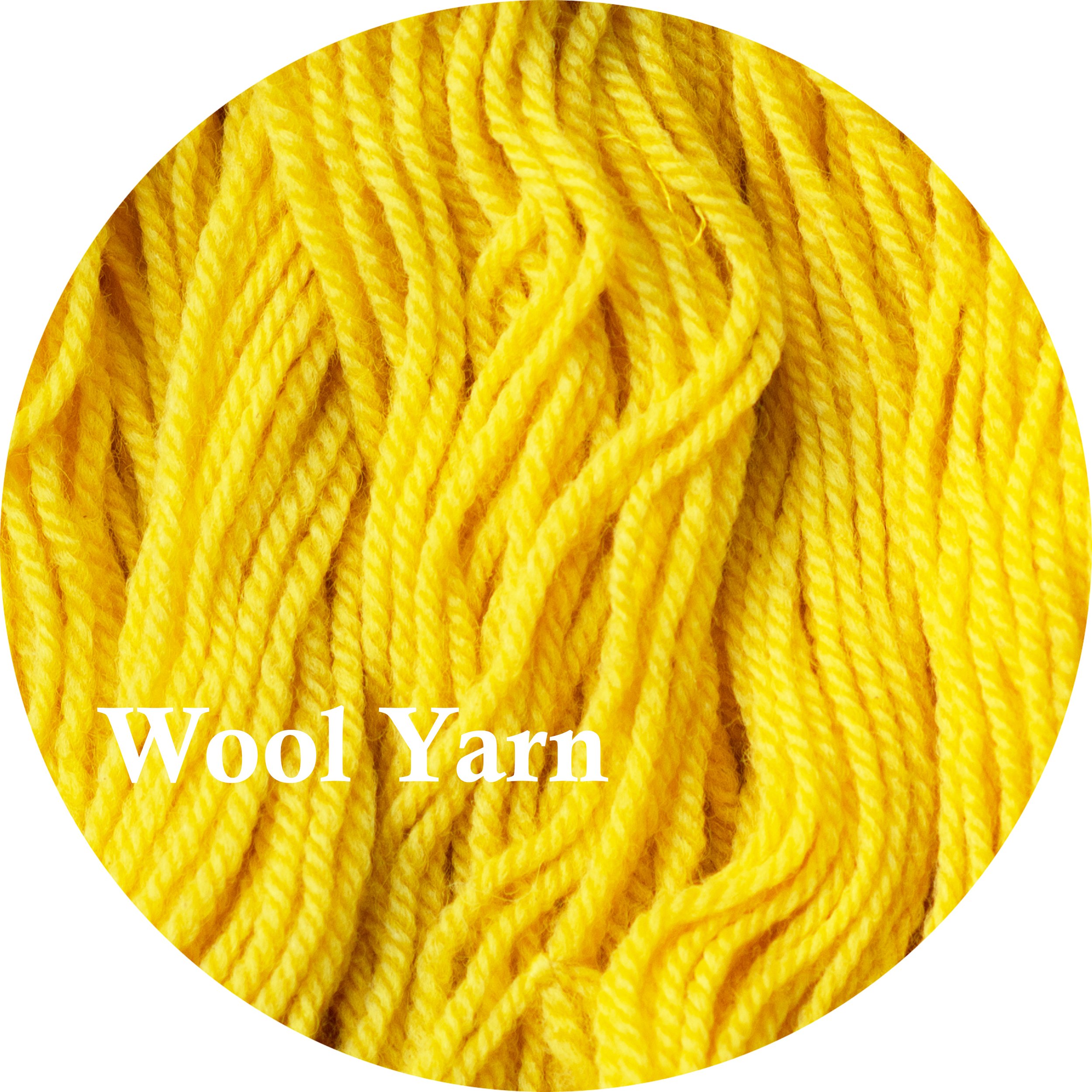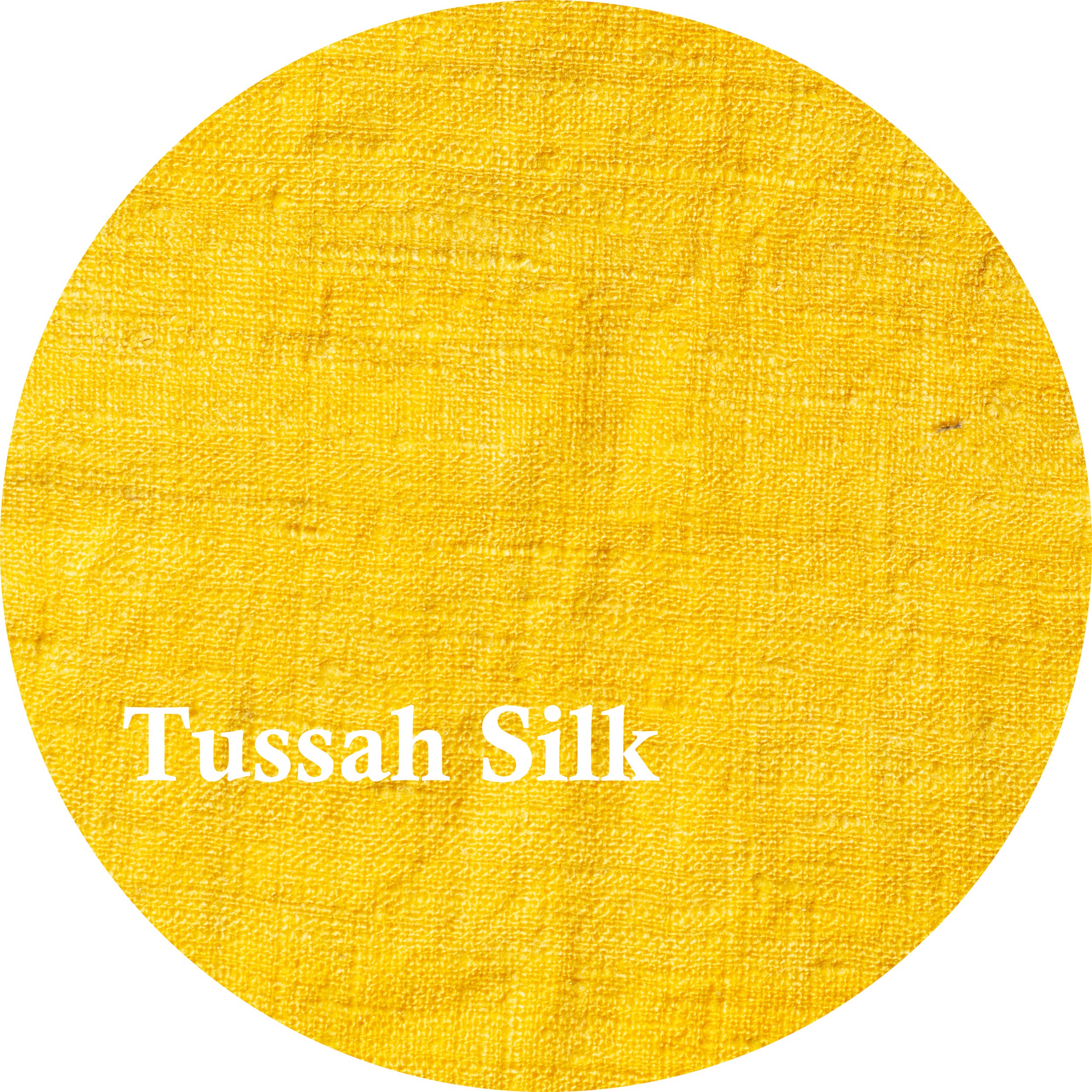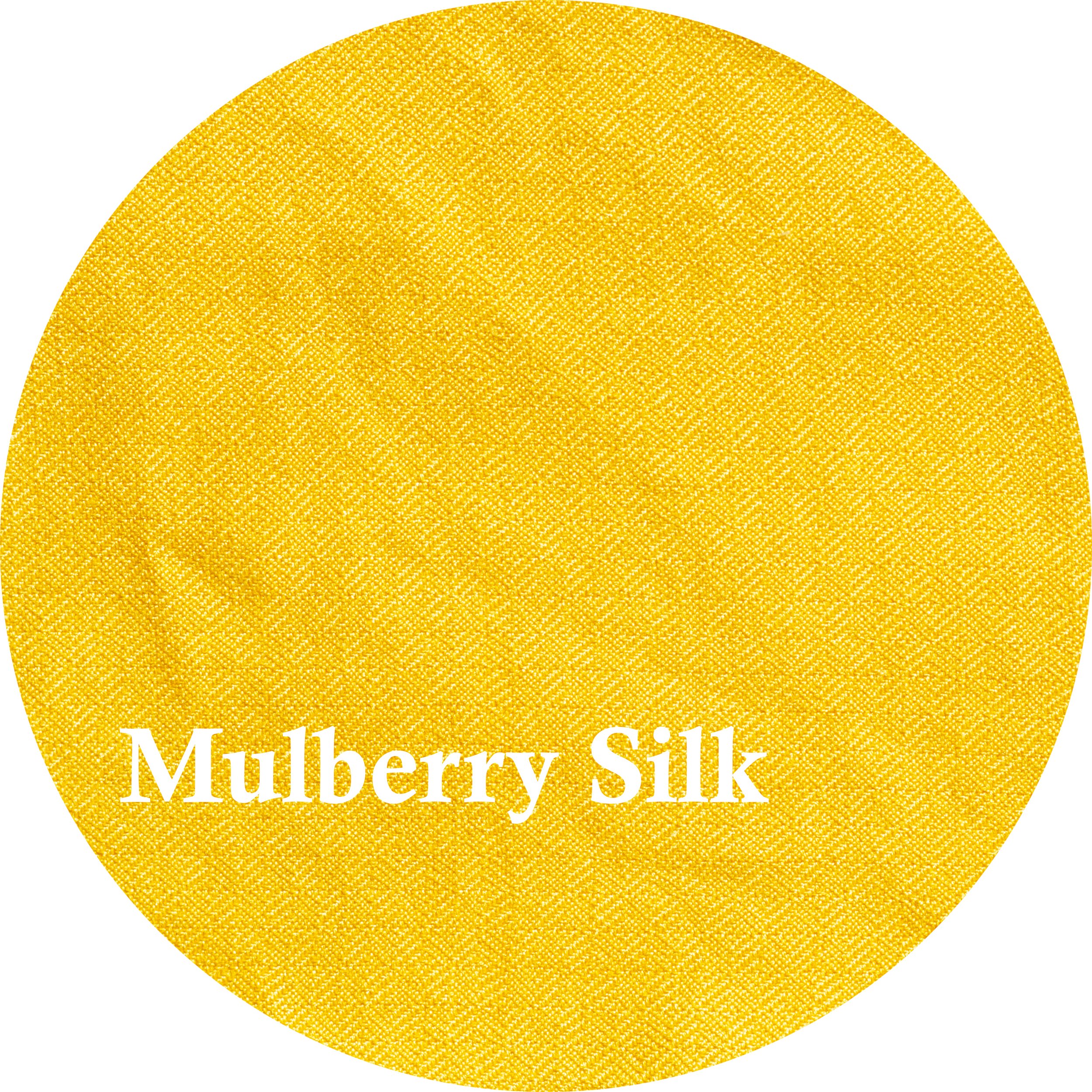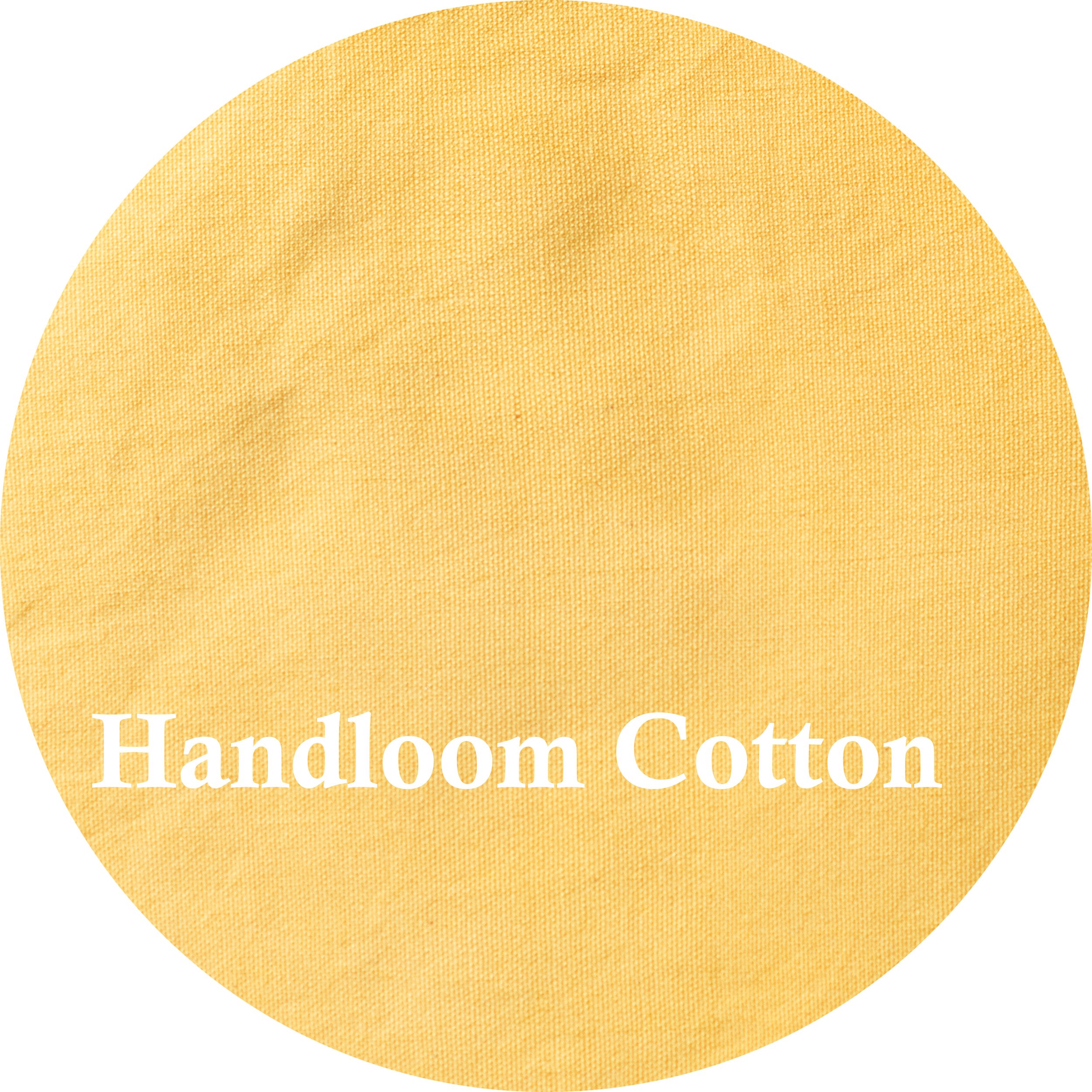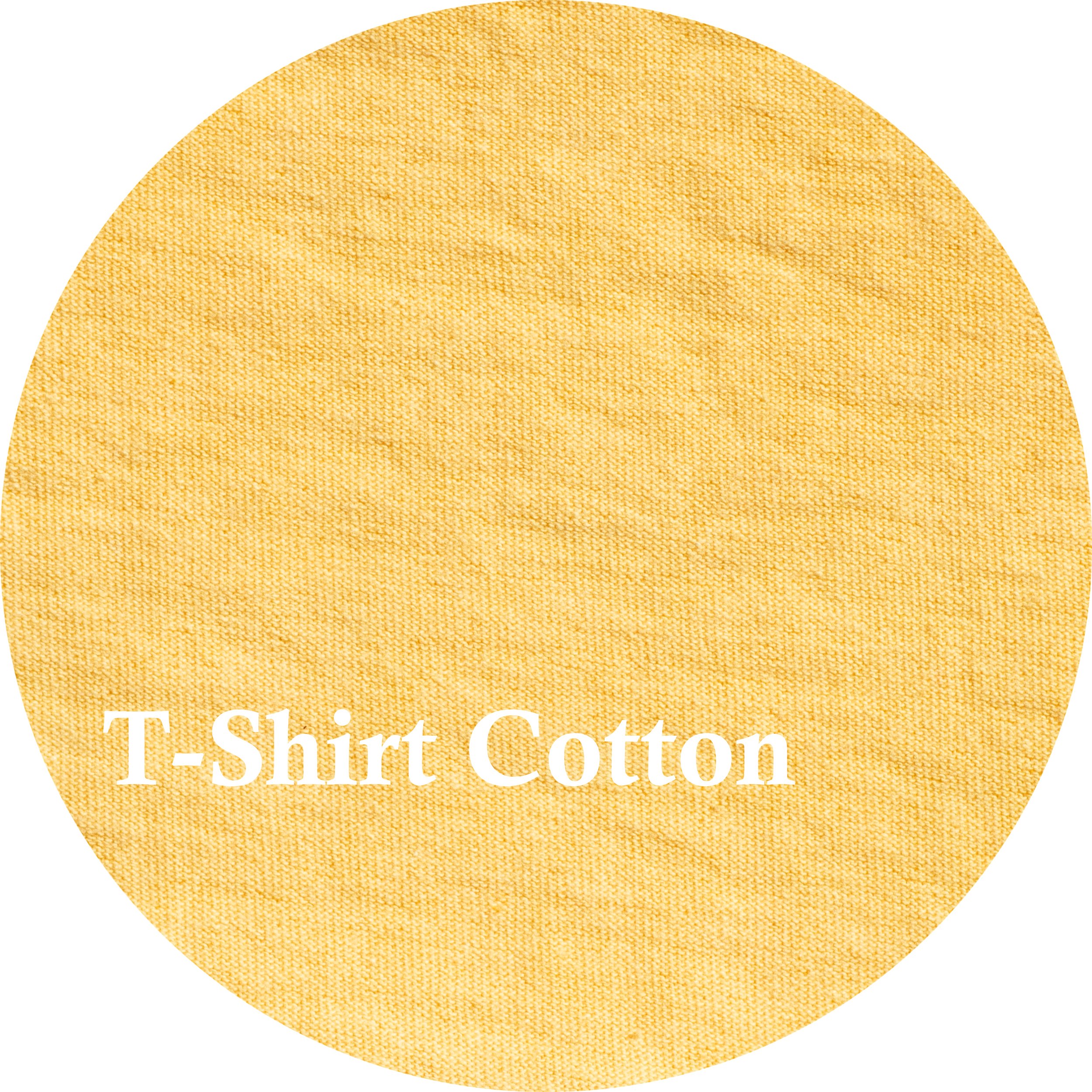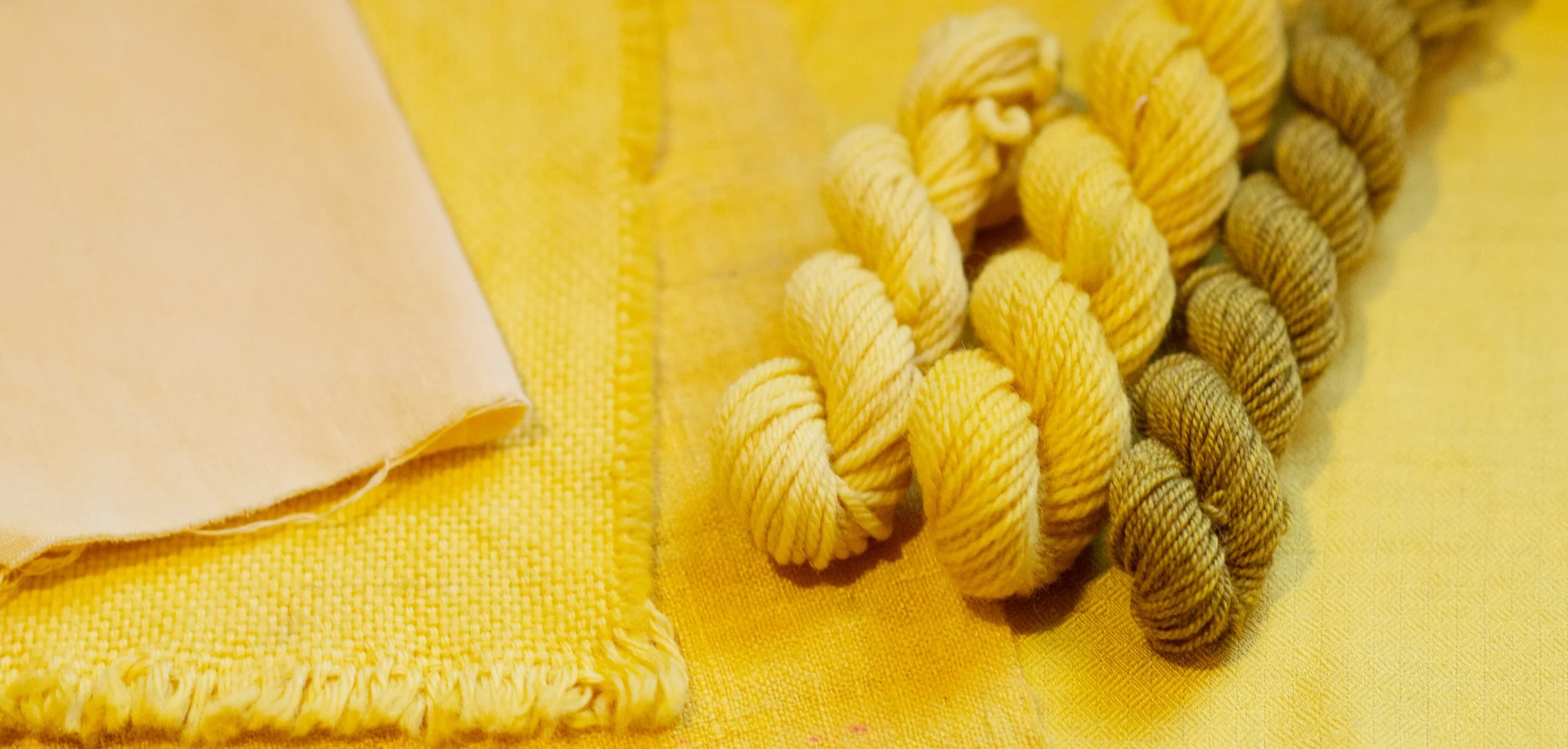
Gardenia Seed
A Guide to Gardenia Seed
Shepherd Textiles Gardenia Seed Natural Dye contains the ground fruits and seeds of the cape jasmine, gardenia jasminoides. Gardenia seeds have been used for centuries as a natural dye in China, Korea, and Japan. They contain a powerful yellow pigment called crocin—the same dyestuff that gives saffron its color. Crocin has an exceptional affinity for silk, and gardenia seeds were one of the sources of the saffron-colored robes worn by Theravada monks in antiquity. Gardenia seeds also dye wool and cotton well, even without a mordant. This is a strong, easy-to-use natural dye that is perfect for both beginners advanced dyers. Our ground gardenia seeds are imported from South Korea, and give strong colors at 40% weight-of-fabric.
1. Background on Gardenia Seed
The cape jasmine flower gardenia jasminoides is native to southern China, where it has been cultivated as a medicine and natural dye since the beginning of the Song dynasty (960-1279 C.E.) over a thousand years ago (Jarvis et al. 2014:80). Each flower contains a fruit—really a large seed with a thin orange covering—that is rich in dyestuffs and over a dozen biologically active compounds. Zhou’s Encyclopedia of Traditional Chinese Medicines (Zhou et al. 2011:452) records that the dried fruit is prescribed for fevers, jaundice, and melancholy, along with many kidney and liver disorders.
The main coloring compound in the fruit is a yellow pigment called crocin. Crocin is the same pigment that gives saffron stigmas their color, which means that gardenia seeds can produce the classic “saffron-colored silk” associated with monks’ robes at a fraction of the price of using real saffron. Gardenia seeds do not, however, contain the same aromatic compounds as saffron stigmas, so they are not interchangeable as a spice. The smell of boiling gardenia seeds is not actively unpleasant, but they do not belong in a dish of paella. The crocin in gardenia seeds is substantive on all natural fibers; it dyes them even without a metal mordant. Indeed, this may be one of the few natural dyes which produces equal if not better colors without a mordant. Gardenia seed gives clear sun yellows on wool, soft lemon shades on cotton, and fantastic bright yellow-golds on silk. It is one of the easiest natural dyes to use; the ground seeds are simply simmered for 90 minutes with whatever fiber is desired.
Our ground gardenia seeds are imported from South Korea, where they are used both as a textile dye and as a colorant for cakes, ice cream, and yoghurt. They give strong yellow shades at 40% weight-of-fabric, and are suitable for all natural fibers.
A Classic East Asian Dye
2. Safety Precautions
DO NOT INGEST. This product is intended for textile dyeing, not as an herbal supplement.
Avoid eye contact. If eye contact occurs, rinse with cool water.
Not for use as a cosmetic additive; do not apply directly to skin or hair.
Open carefully to avoid spilling or creating dust. Work in a well-ventilated space.
If a spill occurs, quickly wipe up with a paper towel or disposable rag.
Use only dye pots and utensils dedicated to dyeing. Do not use any pots, containers, spoons, tongs, thermometers, or other utensils that will be used for food preparation.
Gardenia seed powder, and all dye baths and mordant liquors made while dyeing, should be kept out of reach of children and pets. Use only with adult supervision.
Shepherd Textiles, LLC is not liable for any misuse of this product or any unintended staining of your clothing, workspace, or other property. Use only as directed.
3. Recommended Supplies
Dye pot. Use a dye pot large enough to hold all your fibers, with plenty of room for them to move around and for the liquid to circulate freely.
Metal tongs. A pair of tongs is useful for stirring and taking fabric out. Use tongs dedicated to dyeing, and not for food preparation.
Rubber gloves. Wear rubber gloves while handling mordanted/dyed fiber before it has been rinsed.
Candy thermometer. The best way to keep track of temperature is to use a candy thermometer that clips to the side of the dye pot.
Scale. Use a scale to weigh out fiber, mordant, and dyestuff.
Alum mordant. The alum usually used for mordanting is aluminum potassium sulfate, also known as potash alum. It is the same alum that you can find in a jar in the spice section at the grocery store.
4. Preparation: Mordanting with Alum (Optional)
Gardenia seed is substantive to all natural fibers; it dyes permanently without the need for a mordant. Indeed, this is one of the few natural dyes where a mordant just barely improves the depth of color. A mordants can, however, increase the color fastness. If possible, soak your fibers in water for a few hours before mordanting, so that the mordant will penetrate deeply and evenly. Make sure to weigh the fibers first, while they are still dry.
For protein fibers (wool, silk, alpaca, etc.): Mordant at 12% WOF with alum.
Weigh out the fibers you plan to dye (while they are dry). Multiply that weight by 0.12 to get the amount of alum you will need.
Fill your dye pot with hot tap water, leaving enough room for the fiber.
Weigh out the correct amount of alum and pour it into the dye pot. Mix with a spoon or metal tongs until it has dissolved.
Gently place your fibers into the mordanting solution.
Heat mordant bath to 180F and maintain heat for 1 hour. If you don’t have a candy thermometer, you will have to estimate the temperature. At 180F, steam vapor will be rising off the water but it will not be bubbling. If your mordant bath starts to bubble, turn down the heat.
Stir every 15 or 20 minutes to make sure fibers mordant evenly. If they do not, the dye will take better in some places than others.
After an hour, remove from heat and let cool to room temperature. Once cool, you can immediately proceed to rinsing, or you can leave the fibers to steep overnight in the mordant bath. This can dramatically improve results, especially when dyeing thick or tightly woven fabrics.
When ready to rinse, put on rubber gloves and gently squeeze excess mordant solution back into the pot. Rinse fibers briefly in lukewarm water. The fiber does not need to be thoroughly washed, but any excess mordant should be rinsed out. Set aside until ready to dye. Keep out of reach of children and pets.
Dispose of mordant solution according to local guidelines.
For cellulose fibers (cotton, linen, etc.): Scour well and treat with a tannin before mordanting.
Gardenia Seed will give pleasant lemon shades on cotton, even cotton that has not been pre-treated in any way. However, to get a result that is more colorfast (and with a very slightly deeper shade), give cotton the full treatment of tanning and mordanting.
Scour cellulose fibers well. Traditionally this is done in a highly alkaline soda ash solution. Add 2 tsp of soda ash and 1 drop of dish soap to a 5-gallon dye pot. Add cellulose fibers and heat to 180F-190F for an hour, stirring occasionally. Remove from heat, and when cool enough to handle, rinse and wring out well. Household detergents like Tide© are also alkaline (PH 11), so you can also toss the fiber in a washing machine on a high-temperature cycle with plenty of detergent. This will not clean them nearly as deeply as simmering with soda ash, but it will yield much better results than not scouring at all.
Apply a clear tannin to the scoured fabric: Sumac Extract is the best choice as it will not alter the hue of Gardenia Seed. To use, fill your dye pot with hot water, dissolve 10% WOF Sumac Extract into the dye bath, simmer for an hour, then allow to cool. For best results, steep overnight. This process will make the cotton or linen more receptive to mordants. After steeping, remove fibers and rinse well.
Mordant with alum as described above for protein fibers.
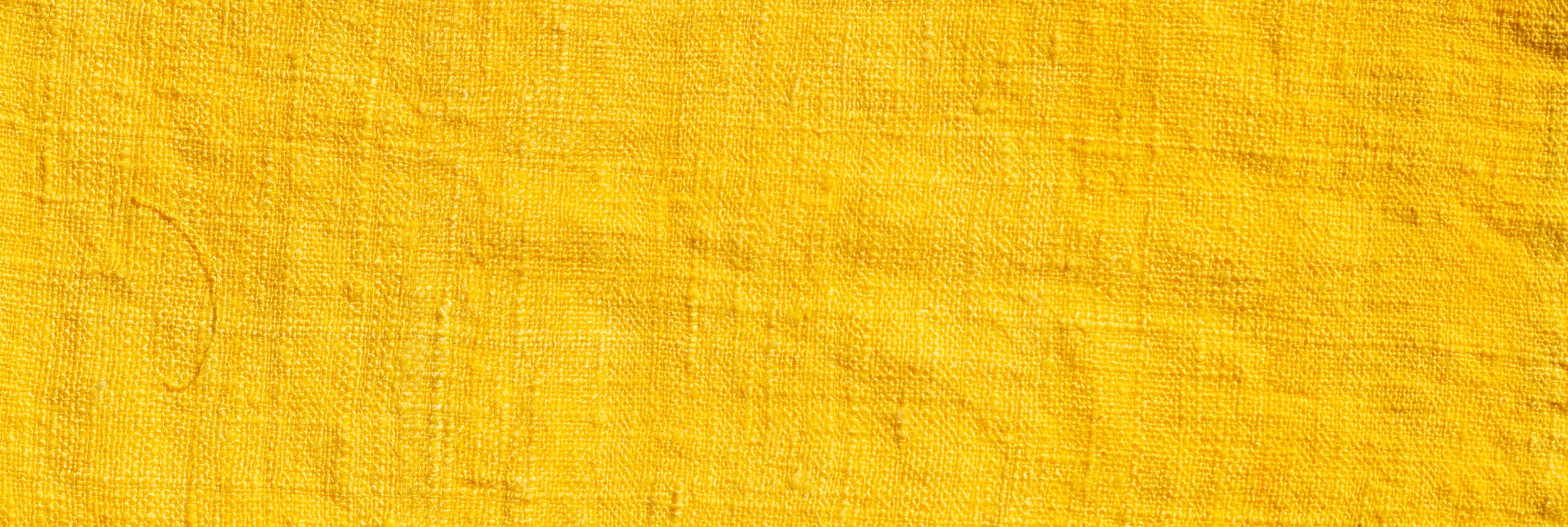
The Recipe
5. Recipe: Saffron Yellow
The crocin in Gardenia Seed is the same pigment found in saffron, and it gives a bright, warm yellow on all natural fibers. The use of an alum pre-mordant is optional. Though it will increase lightfastness, it will not have much effect on the color. The only exception is on cotton; the fabric will develop a slightly deeper yellow shade if it is fully tanned and mordanted before dyeing. We recommend using 40% weight-of-fabric (WOF) of Gardenia Seed for a strong yellow; use half as much for softer shades.
Fill your dye pot with warm water. No PH adjustments are necessary—Gardenia Seed dyes well at neutral PH (7).
Weigh out 40% weight-of-fabric (WOF) of Gardenia Seed powder. We recommend putting in a disposable cup and mixing it with a little water first to make a thick slurry. If you put the powder directly in the dye bath, it may be difficult to break up some of the small clumps.
Add the Gardenia Seed to the dyebath and mix well*.
Add your pre-soaked and [optionally] pre-mordanted fibers.
Heat the dyebath to 185F-190F. Maintain the heat for 90 minutes, stirring occasionally to make sure all the fibers dye evenly. After 90 minutes, take off the heat and allow to cool to room temperature.
When cool, remove the fibers and rinse briefly in lukewarm water. You can either proceed immediately to rinsing with detergent, or hang the fabric up to dry first to help the color set. Make sure to hang it up in the shade somewhere where dripping dye will cause no damage. Direct sunlight may fade the color before it has had time set.
For final rinsing, we recommend using a PH-neutral detergent like Synthrapol, it is designed to wash out loose dye. Follow the manufacturer’s directions for best results. CAUTION: Gardenia Seed will bleed if not thoroughly rinsed out after dyeing.
Hang up to dry out of direct sunlight.
*NOTE: If you are dyeing yarn, you may wish to heat the dyebath to 185F for half an hour to extract the color, then cool to room temperature and filter the liquid through cheesecloth before adding any fiber. The ground seed particles are about the size of sand and will easily rinse off of woven fabric, but they can be frustrating to get out of loosely spun yarn.
All images and text are copyright of Shepherd Textiles, LLC. Do not reproduce without written permission and attribution.


